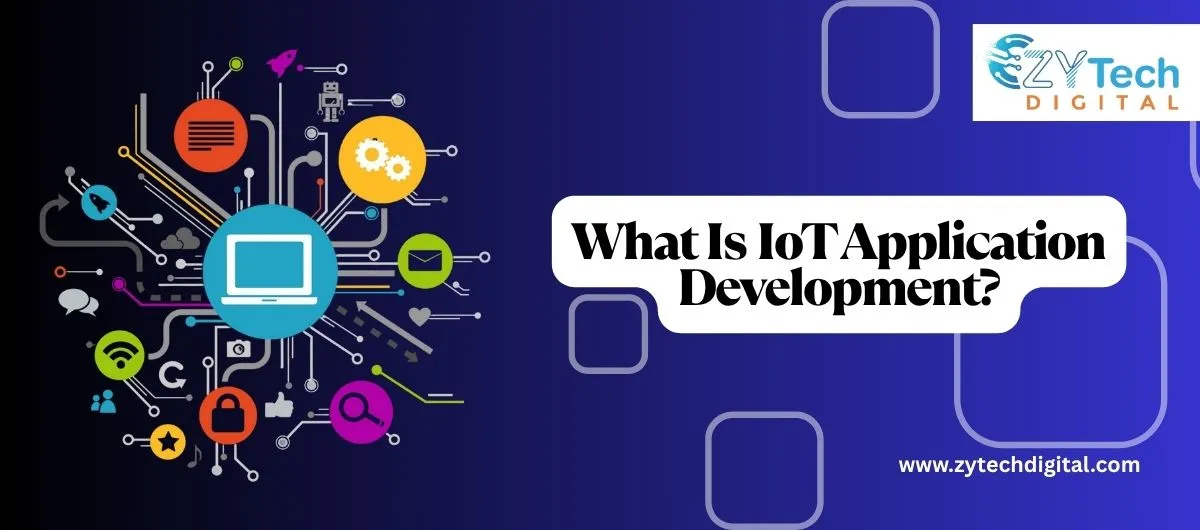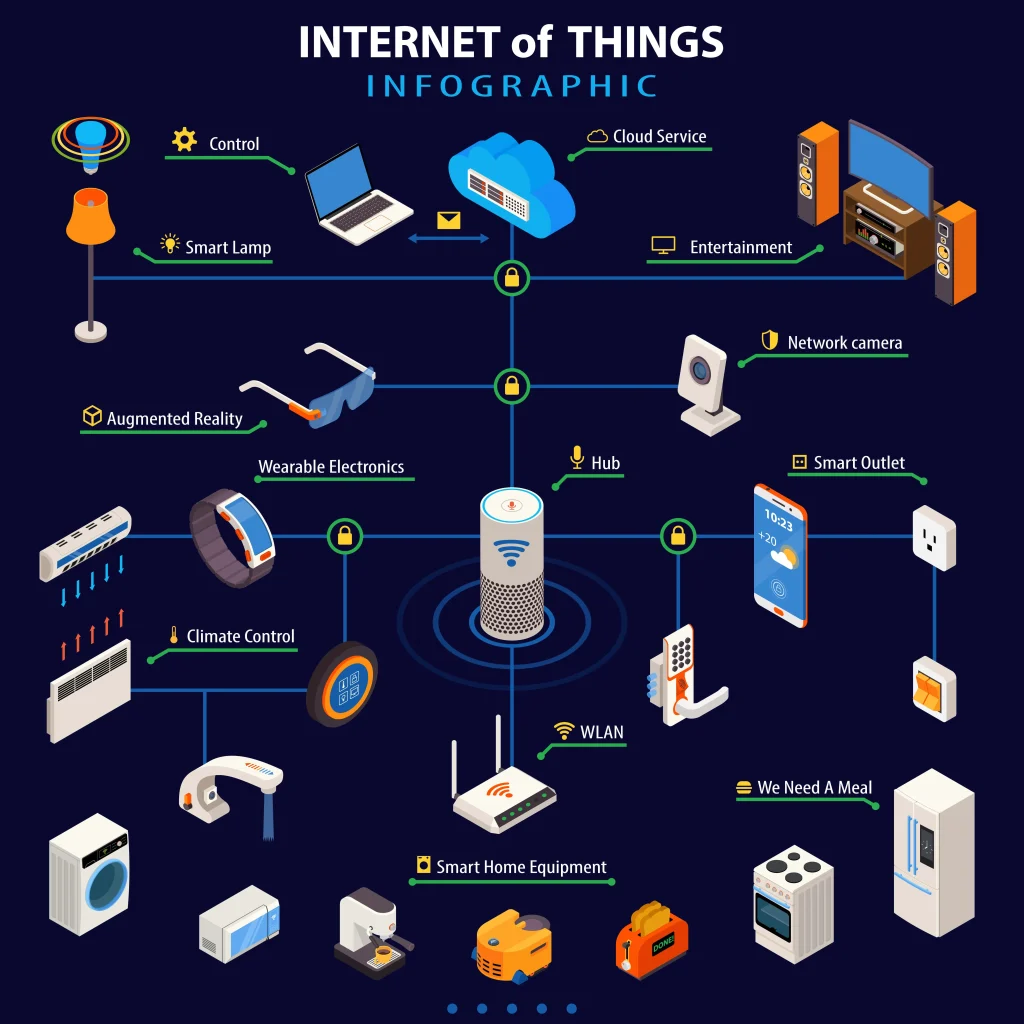
- May 30, 2025
- admin
- 0
Let me start with a simple question: Have you ever used a smart speaker like Alexa or Google Home? Or maybe you’ve come across a smart fridge that suggests what groceries you need? If so, then you’ve already experienced the real-world impact of IoT. These devices are perfect examples of how IoT application development brings everyday objects to life by making them smarter and more connected.
IoT, or the Internet of Things, is changing the way we live and work. From smart homes to smart factories, IoT is everywhere. But what powers these smart devices? That’s where IoT application development comes in.
In this blog, I’ll walk you through everything I’ve learned about IoT app development, what it is, how it works, why it matters, and how businesses can benefit from it. I’ll also cover the key tools, platforms, and challenges, using simple English so anyone can understand.
Whether you’re a tech enthusiast, a business owner, or a student, by the end of this post, you’ll have a solid understanding of IoT app development.
What Is IoT?
Before we dive into the development part, let’s first understand what IoT means.
IoT (Internet of Things) refers to a network of physical devices, think as thermostats, watches, cars and machines, connected to the internet. These devices collect and share data, often in real-time.
For example:
- A smart thermostat can learn your temperature preferences.
- A wearable fitness band tracks your heart rate and syncs with your phone.
- A smart irrigation system waters your plants based on weather data.
So, when we say “IoT,” we mean devices + internet + data + intelligence.
Need help with IoT application development? Let’s build something smart!
What Is IoT Application Development?
Now that we understand what IoT is, let me explain what IoT application development means.
IoT application development is the process of creating software that allows IoT devices to:
- Connect and communicate,
- Collect and analyse data, and
- Automate actions based on that data.
It involves writing code and designing user interfaces so that these smart devices can work together and deliver value to users.
For instance:
- A mobile app that lets you control your smart lights.
- A dashboard that monitors machine health in a factory.
- A cloud system that gathers and analyses sensor data from farms.
As a developer or business, building an IoT app means you’re creating the brain of the device. The physical device is like the body, but without the app, it can’t think or act.

Why Is IoT Application Development Important?
Here’s why I believe IoT app development is such a big deal:
1. It Makes Devices Smart
Without an app, your smart device is just a regular object. The app adds intelligence and automation.
2. It Improves User Experience
An intuitive IoT app allows users to easily control their devices and get value from them. Think about adjusting your thermostat from your phone while you’re on vacation. That’s powerful.
3. It Helps Businesses Grow
IoT apps give companies real-time data, automation, and new ways to serve customers. For example, predictive maintenance in manufacturing can save millions by preventing breakdowns before they happen.
4. It Drives Innovation
From smart homes to smart healthcare, IoT applications are at the heart of innovation. They’re making cities smarter, homes safer, and businesses more efficient.
Real-Life Examples of IoT Application Development
Let me give you a few real-world examples so you can better understand:
1. Smart Home Apps
Apps like Google Home or Amazon Alexa let users control lights, speakers, and thermostats using voice or mobile devices.
2. Healthcare Monitoring
Wearable devices like Fitbit or Apple Watch track health metrics and send the data to health apps. Doctors can even monitor patients remotely.
3. Industrial IoT (IIoT)
Apps in factories track machines, check temperatures, or detect failures. They help improve productivity and reduce human error.
4. Agriculture Tech
Farmers use IoT apps to monitor soil moisture, crop health, and automate irrigation systems based on real-time weather updates.
Key Components of IoT Application Development
If you’re wondering how to build an IoT app, let me walk you through the main components. I like to think of it in four layers:
1. Hardware Layer (Devices and Sensors)
These are the physical components: smart sensors, embedded systems, and RFID chips that collect data.
2. Connectivity Layer (Networks)
The data needs to travel. This layer involves Wi-Fi, Bluetooth, 5G, Zigbee, LoRaWAN, and other communication protocols.
3. Cloud Layer (Data Storage and Processing)
Once the data is transmitted, it goes to the cloud for storage, processing, and analytics.
4. Application Layer (User Interface)
This is the part users interact with — mobile apps, web dashboards, or voice assistants. It allows users to control, monitor, and receive alerts.
Tools and Technologies Used in IoT App Development
When I started learning about IoT app development, I was amazed at how many tools and platforms are involved. Let me share some popular ones:
Programming Languages:
- C/C++ – for programming microcontrollers.
- Python – for rapid development and machine learning.
- JavaScript – for building web-based interfaces.
- Java/Kotlin – for Android apps.
- Swift – for iOS apps.
Platforms:
- Google Cloud IoT Core
- AWS IoT Core
- Microsoft Azure IoT
- IBM Watson IoT
- ThingSpeak (great for beginners)
IoT Operating Systems:
- RIOT
- Contiki
- FreeRTOS
- Mbed OS
IoT Protocols:
- MQTT (Message Queuing Telemetry Transport) – lightweight and great for remote devices.
- CoAP (Constrained Application Protocol)
- HTTP/HTTPS
- Bluetooth Low Energy (BLE)
Step-by-Step: How to Develop an IoT Application
Here’s a simple breakdown of how I approach an IoT app project:
Step 1: Define the Use Case
Know what problem you’re solving. Is it a smart home device? A wearable? Industrial automation?
Step 2: Choose Your Hardware
Pick the sensors, microcontrollers (like Arduino or Raspberry Pi), and communication modules.
Step 3: Select a Platform
Decide whether you’ll use AWS, Google Cloud, or your custom server.
Step 4: Develop the Firmware
This is the software that runs on the hardware. It collects data and sends it to the cloud.
Step 5: Build the Backend
Create APIs, databases, and server-side logic. This is where your app connects with the devices.
Step 6: Build the Frontend App
Design the mobile or web interface that users will interact with. Use Flutter, React Native, or native tools.
Step 7: Connect Everything
Test the integration between hardware, cloud, and app. Make sure data flows smoothly.
Step 8: Add Security
Use encryption, authentication, and secure APIs to protect user data.
Step 9: Test and Deploy
Test the app in real-world scenarios. Fix bugs. Deploy it and start collecting feedback.
Challenges in IoT Application Development
IoT development is exciting, but it comes with its share of challenges. Here are a few I’ve faced:
1. Security and Privacy
IoT apps deal with personal data and can be hacked if not secured. Always implement strong security protocols.
2. Scalability
When thousands of devices connect to your app, your system needs to scale efficiently.
3. Interoperability
Different devices use different protocols and standards. Making them talk to each other can be hard.
4. Power Management
Many IoT devices run on batteries. The app needs to be efficient in power usage.
Benefits of IoT Application Development for Businesses
If you’re a business owner, you might be asking What’s in it for me? Here’s why investing in IoT apps makes sense:
1. Real-Time Monitoring
Get instant data from devices, which helps in decision-making and quick actions.
2. Predictive Maintenance
Avoid costly breakdowns by identifying issues before they occur.
3. Better Customer Experience
Provide smart, convenient services that improve user satisfaction.
4. Cost Savings
Automation and data-driven insights reduce labour and energy costs.
5. Competitive Advantage
Being early in the IoT space gives your brand an edge.
Future of IoT App Development
Looking ahead, I believe the future of IoT application development is incredibly bright. Here’s what we can expect:
- 5G networks will make devices faster and more responsive.
- AI and Machine Learning will make devices even smarter.
- Edge computing will allow data to be processed locally, reducing latency.
- Blockchain may be used to secure IoT networks.
- Voice and gesture control will become more common in user interfaces.
Conclusion
So, what is IoT application development? In simple terms, it’s the process of creating smart software that helps devices talk to each other and take action. From home automation to industrial systems, IoT apps are shaping our world.
As someone who’s walked this path, I can say it’s a rewarding journey. You get to build solutions that make everyday life easier, safer, and smarter.
If you’re a developer, it’s time to explore this exciting field. If you’re a business owner, don’t miss out on the advantages of integrating IoT into your services.
Thanks for reading, and if you found this guide helpful, feel free to share it or drop your questions in the comments below!
ALSO READ: What is UAT in Software Development?
Speak With Expert
Fill The Form Below

